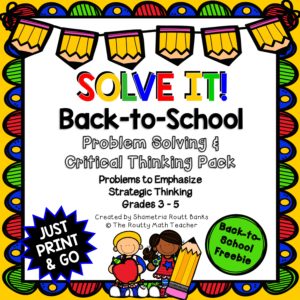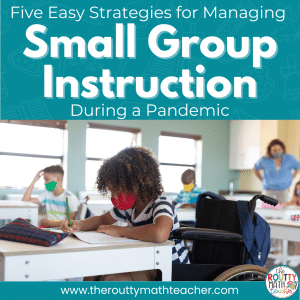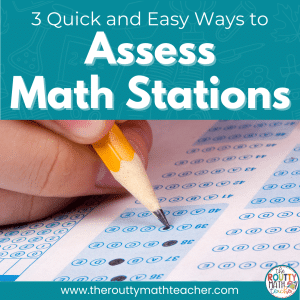
Math Problem Solving: Why I Changed My Format
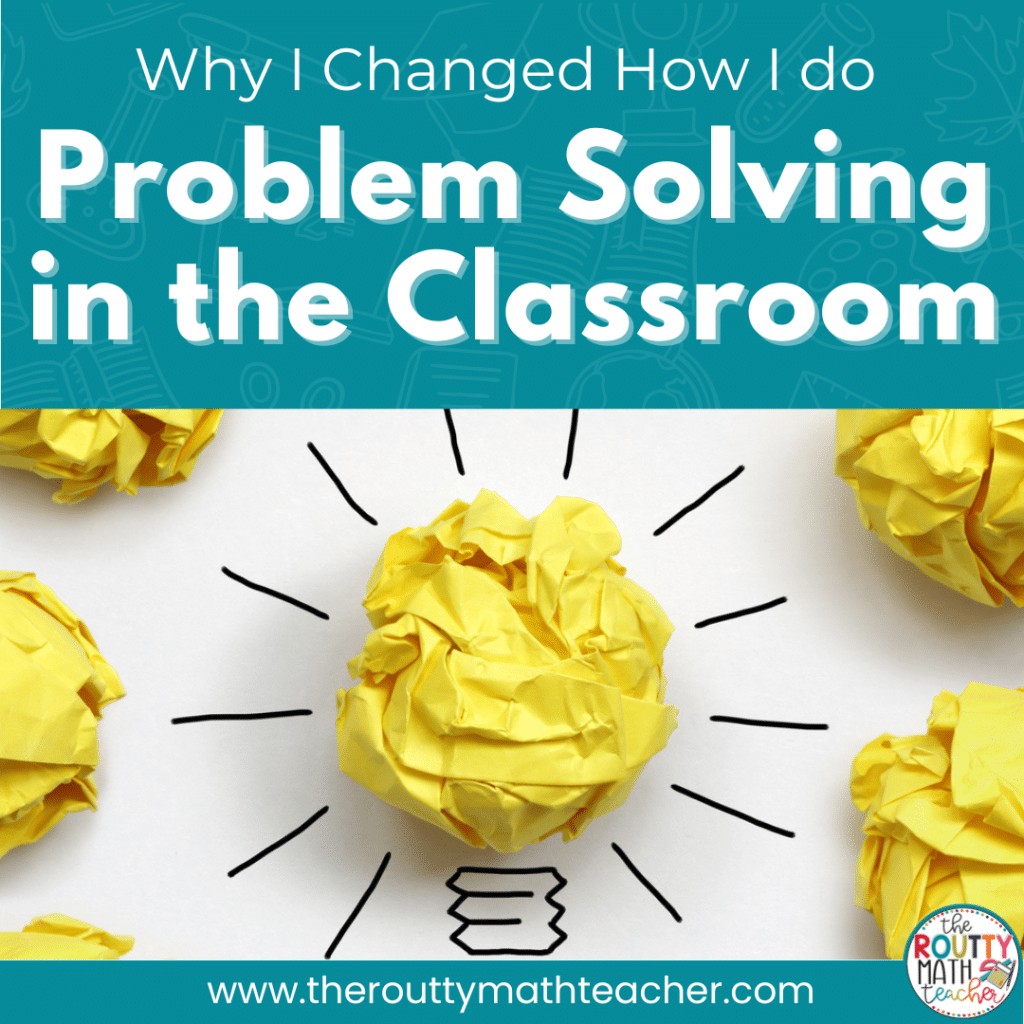
Today’s post tells the story of how I evolved my math problem solving program in the classroom and provides tips for how to build powerful math students who can not only analyze word problems but also solve non-routine problems efficiently using effective math problem solving tools. I also share some of the tools that I found to be successful for me in the classroom. Enjoy!
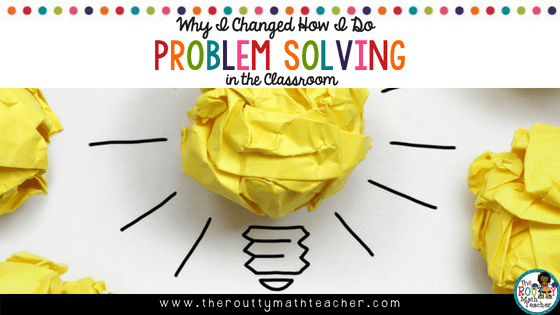
How I Used to Do Math Problem Solving
When I first started teaching 16 years ago, I knew it was important to teach math problem solving in the classroom, so I had a daily/weekly activity where I picked a strategy and “taught” my students how to use that strategy to solve specific problems. I was so young and misguided that I didn’t realize I had completely missed the mark. Even when my district’s math curriculum coordinator stopped by for a visit and encouraged me to allow the students to solve the problems without giving them a specific strategy to use, I struggled to really “get it.”
Franky, it wasn’t until year two or three that I really started to see math problem solving differently. At that time, I was using a myriad of problem solving challenges sporadically throughout the week as time allowed. While I certainly think the time was well-spent, I don’t believe my students were really developing their math problem solving toolboxes in the way that I wanted them to.
When I fast forward a couple of years, I find myself with a new way to infuse math problem solving. I’d discovered this amazing question of the day program where students had one lengthy problem scenario, full of numbers and information and five questions, one for each day of the week. I thought this was brilliant! I set aside about 15 minutes each day for the task and my students got to problem solve every day. It’s a win-win! I used this structure for a couple of years before I finally realized that my students were not problem solving; they were solving problems.
Problem Solving vs. Solving Problems
It’s funny that as a math specialist I never considered the difference before. However, when my students were completing the question of the day task, they were solving routine word problems. Now, don’t get me wrong, there is a place for this in our day-to-day curriculum; however, it was not helping my students develop the problem solving strategies that I set out to develop my very first year in the classroom. While the question of the day task was quite successful and, after using a structure to help my students attend to the fundamentals of analyzing word problems, they became strong word problem analyzers. This excited me, but when it came to problem solving, they were not as efficient.
So, what does this mean? There is a difference between problem solving and solving problems. While the difference may seem minute, it makes a huge difference for instruction.
Solving Problems
Many of the word problems our students routinely solve are procedural in nature. Once students determine the “formula” to use, they can apply the formula with ease, such as by using keywords. (Remember my blog post earlier this year about the dangers of keywords? If not, read it here!) While many teachers consider solving problems to be the same as problem solving, these tasks lack the cognitive demand necessary to develop our students’ critical thinking skills.
As I mentioned earlier, there is a place for these kinds of problems in our everyday curriculum; however, it’s important to consider how we utilize them. Use the strategies below to get the most from these tasks.
- Include more details than what is needed to solve the problem
- Have students represent their solutions in multiple ways, i.e. pictures, symbols, and/or words
- Require students to justify their answers
- Ask students to explain how they know their answer is reasonable
Problem Solving
On the other hand, problem solving tasks are non-routine problems that can not be solved with basic procedures and “require complex and non-algorithmic thinking” where a “predictable, well-rehearsed approach or pathway is not explicitly suggested by the task” (p. 18). Because these tasks are more complex, they do take additional time to complete; however, my students have loved the challenge, especially once they had a set of problem solving strategies on which they could rely. Use the strategies below to get the most from these tasks:
- Infuse problem solving tasks to extend and build on content and skills
- Utilize tasks that have multiple entry points to allow all students an opportunity for success
- Allow productive struggle (Read more here!)
- Provide opportunities to solve these types of tasks on a regular basis
- Encourage students to use a variety of strategies to solve the problems
- Have students represent their solutions in multiple ways, i.e. pictures, symbols, and/or words
- Employ math talk strategies to discuss student work
- Require students to justify their answers
- Ask students to explain how they know their answer is reasonable
Next Steps
Developing a good balance between reinforcing strategies for solving word problems and implementing effective math problem solving routines takes time. To get you started, I will be blogging about how to start a problem solving routine and how to convert word problems into problem solving tasks over the next few weeks. Be sure to stay tuned!
In the meantime, be sure to grab a copy of my Solve It! Back to School Math and Problem Solving Activities Pack to get some great examples of non-routine tasks to start your year! Click here or on the image below to grab your copy!
Sound Off! How will you help your students build their math problem solving toolboxes this year? Respond in the comments below. 
Reference: National Council of Teachers of Mathematics (2014). Principles to actions: Ensuring mathematical success for all. Reston, VA: National Council of Teachers of Mathematics.




